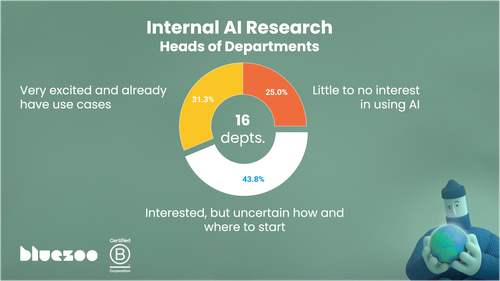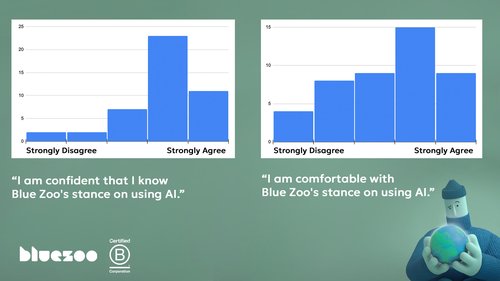

We won't delegate our creativity - our AI manifesto

Generative AI is rapidly transforming the creative industries, presenting both opportunities and challenges that demand careful consideration. As discussions about AI's role in animation intensify across our industry, we recognised the need to develop a clear and ethical framework for its use within our studio. This manifesto outlines our approach to AI implementation - one that prioritizes human creativity, transparency, and responsible innovation while staying true to our values as a B Corporation.
The development of this manifesto was prompted by growing client questions and staff uncertainty regarding AI's role in our work, alongside our need to address these questions through the lens of our B Corp values. As a certified B Corporation, we are committed to both ethical practices and the thoughtful adoption of innovative technologies in ways that respect human creativity and intellectual property rights. In line with our dedication to transparency - a core B Corp principle - we are publicly sharing our AI manifesto to clearly communicate our position and policies on artificial intelligence usage within our organisation.
Where some companies see AI as a route to increase profits at the expense of human labour, we want to use AI to maximise our creative output. We have a track record of this; for example, in 2015, we were the first animation studio in the world to fully move to GPU rendering across all of our TV shows. This reduced our render farm costs dramatically, but instead of using this to maximise profit, we used the savings to push quality higher for the same budget for longer-term growth. That experience taught us that experimenting with new tools, while sometimes challenging, is essential for reaching our creative ambition and delivering the best possible work while not compromising our artist’s creativity.
To write this manifesto, we've engaged in extensive internal discussions led by our Lead R&D Engineer, Vasil Shotarov, who conducted studio-wide surveys to understand the full spectrum of perspectives within our studio.

The discussion revealed a spectrum of perspectives among artists regarding AI integration, ranging from complete opposition to enthusiastic support for exploring its creative potential. Key concerns emerged around potential job losses, reduced job satisfaction, and the ethical implications of using AI models trained on artwork without artists' consent. Additionally, staff expressed worries about how AI adoption might conflict with the studio's environmental sustainability goals, given the technology's energy consumption.

We see AI as a tool, not a replacement for creative decision-making. As outlined in the manifesto, we prioritise using AI models that track and minimise emissions, either on our own or third-party infrastructure. Importantly, we're putting the choice in our artists' hands – each team member can decide whether or not to incorporate AI tools into their workflow.
Looking forward, we are continuing to invest in research and development to understand what all the cutting-edge models are capable of so we can share this knowledge internally to ensure our teams are well-informed about AI capabilities and best practices. Training will be available to all team members who wish to explore these tools, but we maintain that AI adoption remains optional.
We're sharing our complete manifesto publicly because we believe in fostering an open dialogue about AI's role in animation. We invite our industry colleagues, partners, and community to review our approach and share their thoughts. As we navigate this evolving landscape together, we remain committed to both innovation and our core values of artistic excellence and creative freedom.
Read our full AI manifesto and join us in this important conversation about the future of animation.

